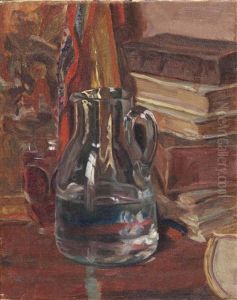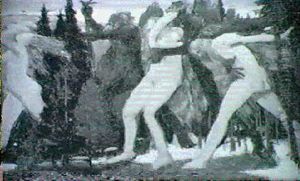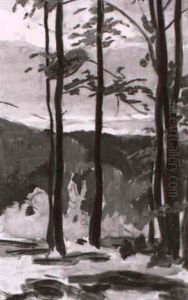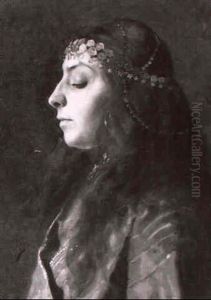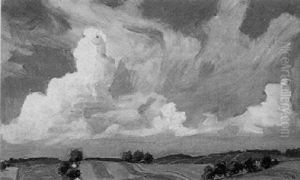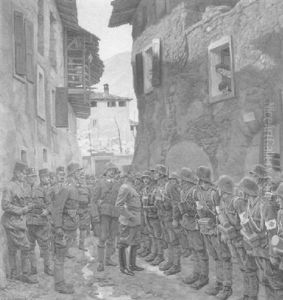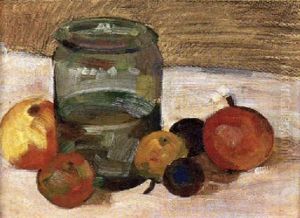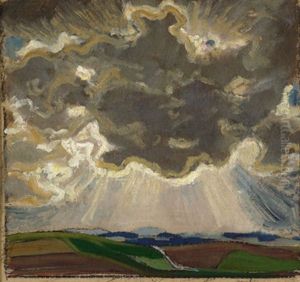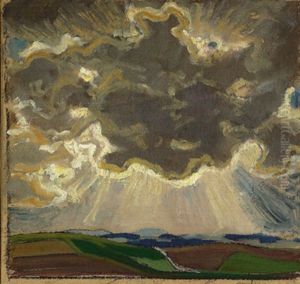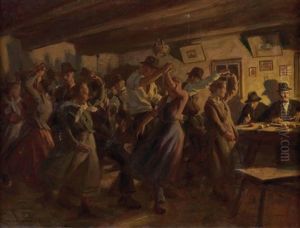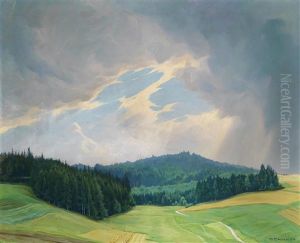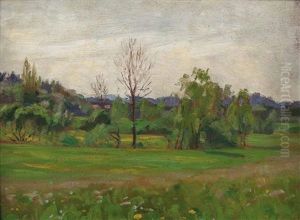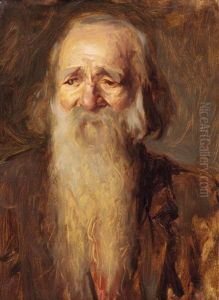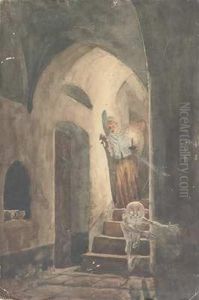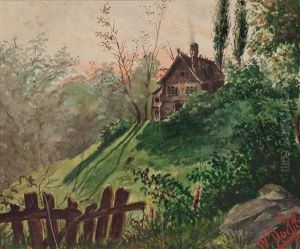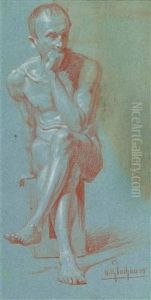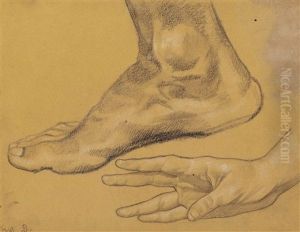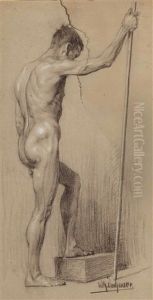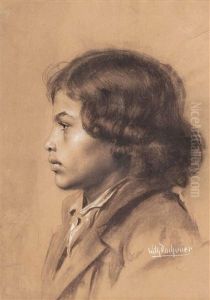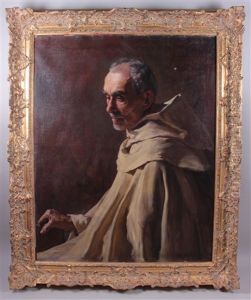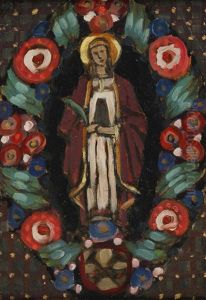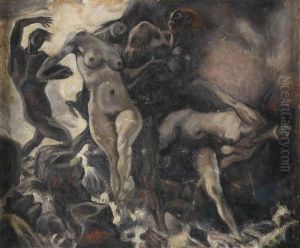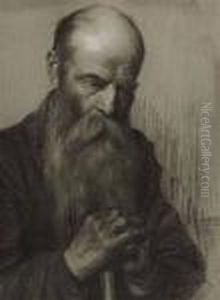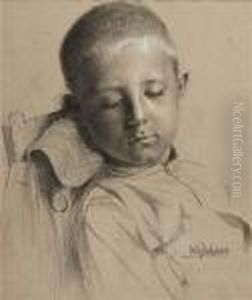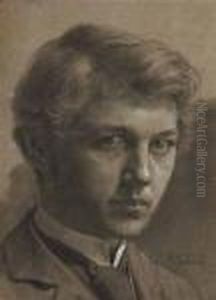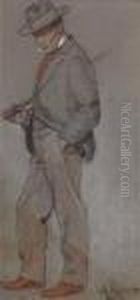Wilhelm Dachauer Paintings
Wilhelm Dachauer was an Austrian painter and graphic artist born on November 5, 1881, in Ried im Innkreis, Austria. He is known for his work in a variety of genres, including landscapes, portraits, historical scenes, and religious themes. Dachauer was a product of his time, influenced by the prevailing styles and the tumultuous political climate in Europe during his lifetime.
Dachauer studied at the Academy of Fine Arts Vienna, where he was a pupil of Christian Griepenkerl, a classical painter, and later of Alois Delug. He honed his skills in both painting and graphic arts, working in techniques such as etching and woodcut, which were popular during the early 20th century.
After his studies, Dachauer's initial work reflected the Art Nouveau movement, but he gradually shifted towards a more conservative, traditional style. He gained recognition for his historical and mythological subjects, often imbued with a strong sense of nationalism which was common in the arts during the interwar period.
During World War I, Dachauer served as a war artist, documenting the conflict through his work. This experience had a profound impact on him and can be seen in his subsequent art, which often depicted the hardships and realities of war.
Dachauer's later career was marked by his involvement with the Nazi regime, for which he created propaganda art. His affiliation with the Nazis overshadowed his earlier artistic achievements and has complicated his legacy. After World War II, he was detained for a period due to his participation with the Nazi Party.
Wilhelm Dachauer died on October 23, 1951, in Vienna, Austria. His work remains a subject of study for its artistic merit and for its historical significance, reflecting both the aesthetic movements of early 20th-century Europe and the era's political upheavals.
